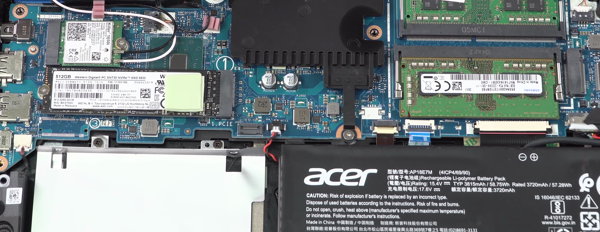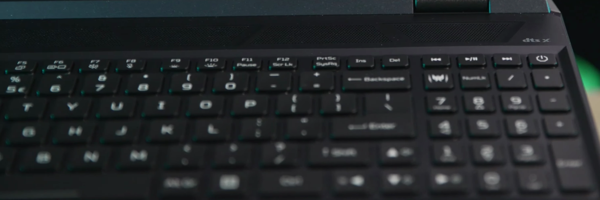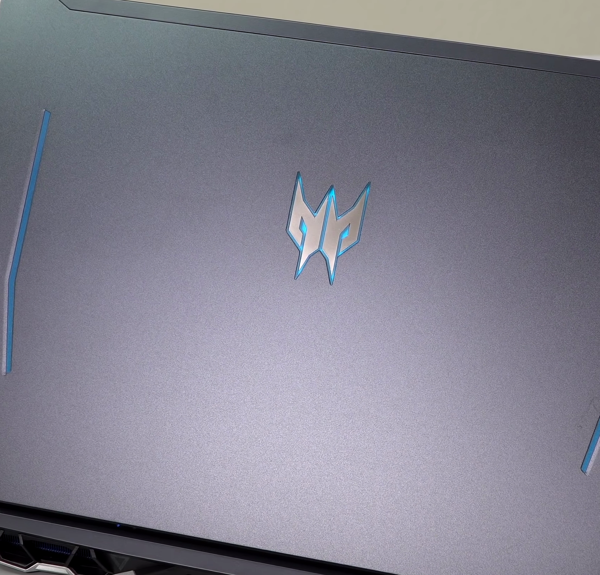Note: As an Amazon Associate I earn from qualifying purchases.
My review of the Acer Predator Helios 300 with an i7-10750H and RTX 3060 (2024)
Introduction
At the office I recently received the Acer Predator Helios 300 Gaming Laptop (model PH315-53-71HN) - mainly for office work but also for some gaming. Below are my thoughts on its performance, construction, battery life, overall impressions, and more.
Specifications
| Property | Value | Property | Value |
|---|---|---|---|
| Brand | acer | Model Name | PH315-53-71HN |
| Screen Size | 15.6 Inches | Color | Black |
| Hard Disk Size | 512 GB | CPU Model | Corei7-10750H |
| Ram Memory Installed Size | 16 GB | Operating System | Windows 10 Home |
| Special Feature | Backlit Keyboard | Graphics Card Description | Dedicated |
Photos
Click on photos to enlarge them:
Prices
Check prices of the Acer Predator Helios 300 Laptop on:
Design and Build Quality

When it comes to the Acer Predator Helios 300 Gaming Laptop, especially the model PH315-53-71HN, the design and build quality immediately caught my attention. I’ve had my fair share of laptops over the years, and there are certain aspects of this one that stand out:
Robust Construction: The laptop feels solid with a mix of metal and sturdy plastic which gives it a premium feel.
Aesthetic Design: The black color scheme with the Predator logo and RGB-backlit keyboard exudes that gaming vibe.
Comfortable Keyboard: The concavity of the WASD keys and the overall keyboard layout are comfortable for extended gaming sessions.
Upgradeability: With an additional hard drive bay and an open M.2 slot, there’s ample opportunity for expansion, which is a huge plus for me.
Port Assortment: A comprehensive range of ports including USB 3.2 Gen 2 and HDMI 2.0 supports all my peripherals without a hitch.
However, no design is without its flaws. I’ve noticed that the metal edges can be a bit on the sharp side, which is less than ideal. Also, as sleek as the matte finish is, it’s quite the fingerprint magnet, requiring frequent cleaning to maintain its sharp look.
The 4-zone RGB backlit keyboard is a treat to use, but the brightness levels are somewhat disappointing; it’s particularly noticeable around the arrow keys. The key legends began to fade quicker than expected, which was a letdown considering everything else the laptop brings to the table. Perhaps in future models, a more durable paint for the keys would be an appropriate upgrade.
From a structural standpoint, the rigidity of the hinge mechanism is reassuring. I’ve had laptops in the past where the screen wobbled at the slightest touch, but this is not the case here — the hinge provides a stable viewing experience, which I find essential when gaming in various environments.
The backlit Predator logo on the lid is a small touch but it’s those kinds of details that make the Predator Helios 300 stand out in a crowd. It’s these intricate design elements that show Acer’s commitment to the gaming community.
Early on, I learned to appreciate thoughtful design, and during my time with the Helios 300, it’s become evident that Acer has put a lot of thought into the small details. From the keyboard layout to the port selection, it’s clear that the design caters to gamers. And with the option to upgrade components easily, it’s evident that Acer values future-proofing as much as I do. I still wish that the keyboard and finish were a bit more durable, but overall, the build quality leaves me with a positive impression.
Performance and Gaming

The Acer Predator Helios 300 has piqued my interest with its blend of high-end specs and gaming capability. Throwing around terms like 10th Gen Intel Core i7 and RTX 3060 GPU makes expectations soar, so let’s look at how it actually performs in the trenches of digital battlefields and productivity tasks.
Firstly, here’s a quick summary of what’s ticking under the hood:
10th Generation Intel Core i7-10750H 6-Core Processor: Sufficient muscle for gaming and multitasking.
Overclockable NVIDIA GeForce RTX 3060 Laptop GPU: Engaging visuals with good frame rates on most titles.
15.6” Full HD IPS Display: The 144Hz refresh rate and 3ms response time keep gameplay buttery smooth.
16GB DDR4 Dual-Channel Memory and 512GB NVMe SSD: Responsive system and quick load times.
Expandability Options: Available M.2 slot and hard drive bay for upgrades.
When it comes to gaming, the RTX 3060 paired with the i7 processor delivers admirable performance. I’ve tested this rig on several AAA titles; it runs them at high settings without breaking too much of a sweat. The 144Hz screen plays a crucial role, making gameplay experiences incredibly fluid, which is a godsend for fast-paced games. There’s a tangible difference between this and the standard 60Hz displays, and once you’ve had a taste of it, there’s no going back.
However, it’s not without its drawbacks. While the GPU is overclockable, I find myself wishing for a bit more raw power on those max settings. Don’t get me wrong, it’s more than capable, but as future titles become even more demanding, I worry the RTX 3060 might not age gracefully.
The upgradability is a boon, particularly for someone like me who likes to future-proof as much as possible. The additional M.2 slot means extra SSD storage is just a screwdriver away, and for those who need more, there’s a bay for a hard drive. The 16GB of RAM is adequate for now, but some users might want to upgrade it down the line for even smoother performance.
With these thoughts in mind, while I am overall impressed by the Predator’s prowess, I am cognizant of the fine line it walks between current dominance and future-proofing. It’s a competent machine today, but technology is unrelenting, and in a year or two, I might need to consider adding that extra SSD or memory. The Acer Predator Helios 300 is a strong contender in its class and will provide an excellent gaming experience for the majority of gamers. But, as with all technology, it’s worth keeping an eye on those specs to ensure they continue to meet your gaming and performance needs over time.
Thermals and Noise Control

In my time using the Acer Predator Helios 300, I’ve found that thermal management and noise control are critical factors that can’t be overlooked in gaming laptops. I took a detailed look at how this model handles both, and here’s what stood out:
Turbo Mode: Activating Turbo Mode noticeably boosts the laptop’s cooling capabilities, reducing GPU and CPU temperatures significantly during heavy gaming sessions.
PredatorSense Software: This is a handy tool that allows users to customize fan speeds among other settings, which helps in keeping temperatures in check.
Cooling System Design: The 4th Gen AeroBlade 3D Fan Technology is designed to enhance airflow and cooling, which in theory, should keep the system cooler than standard cooling solutions.
However, my practical experience is a little mixed. On the one hand, thermal performance under regular load is quite impressive. The laptop runs relatively cool and the fans are quiet enough not to distract from everyday tasks. But, when I switch to resource-heavy games and push the system, the fans ramp up and become quite loud, verging on the edge of what I’d describe as a jet engine sort of noise.
Despite the noise, it’s a trade-off I can live with considering how it helps maintain better thermal performance and prevent thermal throttling. The laptop does get hot, reaching temperatures of 90 degrees Celsius at times. While this is common for gaming laptops, it’s not ideal. Fortunately, using a cooling pad and ThrottleStop software to limit the CPU’s turbo boost can help maintain more reasonable temperatures around 70-75 degrees Celsius.
Sure, the fans might get loud, especially in Turbo Mode, but the temperatures stay within a safe operating range, which is what matters most to me. I’d rather have a louder laptop that performs well and doesn’t overheat than a quieter one that can’t handle extended gaming sessions.
The addition of an external program like ThrottleStop might not be everyone’s cup of tea, but it’s a useful option that can help with heat management for those who are comfortable tweaking their laptop’s settings. Adjusting fan curves through PredatorSense is a simpler way to manage noise and heat for those who prefer not to delve into more advanced system adjustments.
Overall, the Acer Predator Helios 300 manages thermals reasonably well under normal conditions but could improve under load. The noise might be an issue for some, especially in quieter environments, but if performance is your priority, it’s a small price to pay. And with the right adjustments, both thermal and noise levels can be controlled to some extent, ensuring you have a solid experience with this gaming laptop.
Battery Life and Portability

When considering a gaming laptop like the Acer Predator Helios 300, battery life and portability are key factors that often concern users. Balancing the power needed for high-end gaming with the practicality required for a mobile lifestyle can be a challenge.
From my experience:
Battery Performance: I’ve noticed that during intense gaming sessions, the battery can last around an hour, which is pretty standard for a gaming laptop with such powerful hardware. However, for lighter tasks like browsing or streaming, the battery life can stretch up to approximately 6 hours. For my needs, this is adequate as I’m mostly near a power source and can plug in when necessary.
Charging Time: It’s also worth mentioning that it doesn’t take too long to charge back up to full capacity, which is convenient for me when I’m on the go.
Portability: The Predator Helios 300 is fairly portable for a gaming laptop, but at 4.85 lbs, it’s not the lightest out there. Still, I’ve found it comfortable enough to carry around in a backpack, which is essential as I often move from place to place. The robust build gives me the confidence that it can handle a bit of on-the-road wear and tear.
The only drawback I see is if you’re planning to be mobile for extended periods without access to a power source, as you’ll need to manage your usage and maybe even adjust some settings to conserve battery life. However, for the performance it delivers, this trade-off is understandable and, for me, well worth it.
In summary, while the Acer Predator Helios 300 may not be the champion of all-day battery life, it provides a reasonable performance given the powerful specs it’s packing. I always recommend carrying the charger for longer gaming sessions, but for the occasional move or travel, it’s a solid companion that combines performance with moderate portability.




